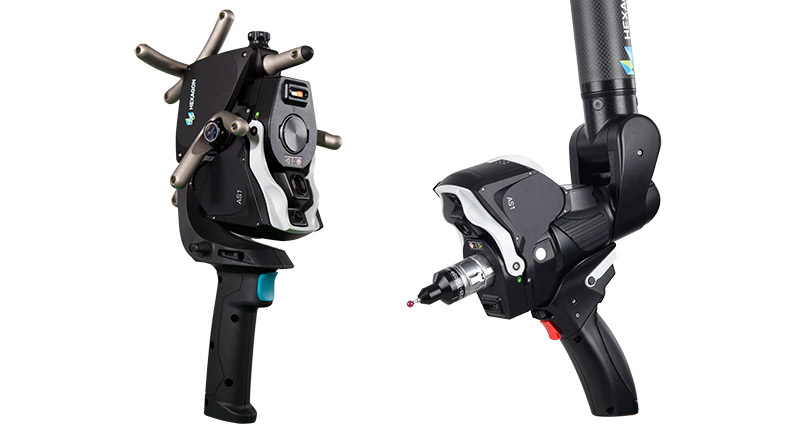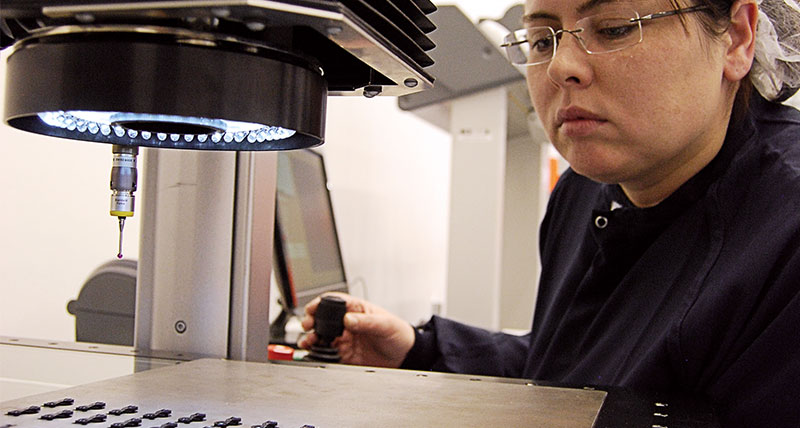Improving quality control in medical knee joint production
On-machine measurement with an Absolute Arm and 3D laser scanner is making the production of innovative medical orthoses both more accurate and easy to achieve.
Contact us

G&G Präzisionstechnik GmbH, located in Süßen near Göppingen, is a young and dynamic company offering high-quality industrial manufacturing of precision parts made of different materials. The business takes on projects of various sizes, from individual parts to small series, and across and range of industries including aerospace, medical technology and racing.
The business’ uncompromising selection of the highest quality production materials, using the most modern working machines, guarantees production quality at the highest level across a huge selection of small-to-medium-sized parts. Powerful and precise machines are for G&G the basic prerequisite for reliable and high-quality products.
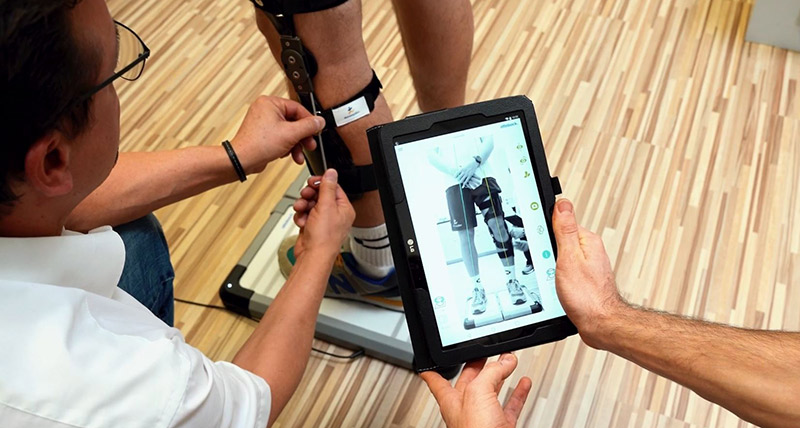
Michael Nonnengässer, master orthopaedic technician and managing director of Nonnengässer Orthopedie Technik in Donzdorf, contacted Martin Gabriel, founder G&G Präzisionstechnik, with a very special request in the field of orthopaedics. The company is a leading provider in the field of orthopaedic technology in the region, and in their daily work, they treat many patients with varus and valgus gonarthrosis, commonly understood as knee malalignment.
“We were dissatisfied with the results of the long-term correction of the orthoses that are on the market and we started looking for a partner who could develop our own joints that would meet our expectations,” recalls Nonnengässer.
The idea of having easily adjustable joints is very appealing, but the implementation is challenging as those joints should be relatively narrow, small and light. But G&G took on the challenge and developed the first prototypes.
“I found the topic exciting overall,” explains Gabriel. “Above all, it gives us a new challenge that is not always there every day, and I find it very interesting to develop new things, especially innovative, new things, and that was ultimately the theme.”
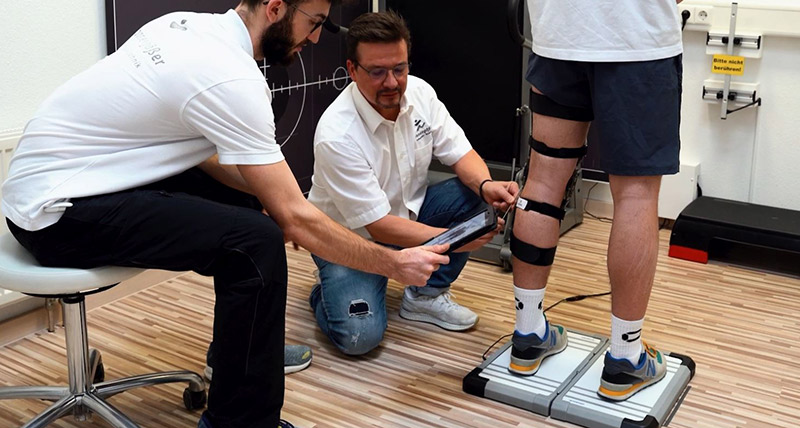
Prefabricated, individually manufactured orthoses do not always work well. The point was not to invent something completely new, but simply to optimise things that are already there. “You don't have to reinvent the wheel, but if we simply discover a problem, we have to get to work on it in order to perhaps improve things and, let's just say, improve mobility for our customers,” explains Nonnengässer.
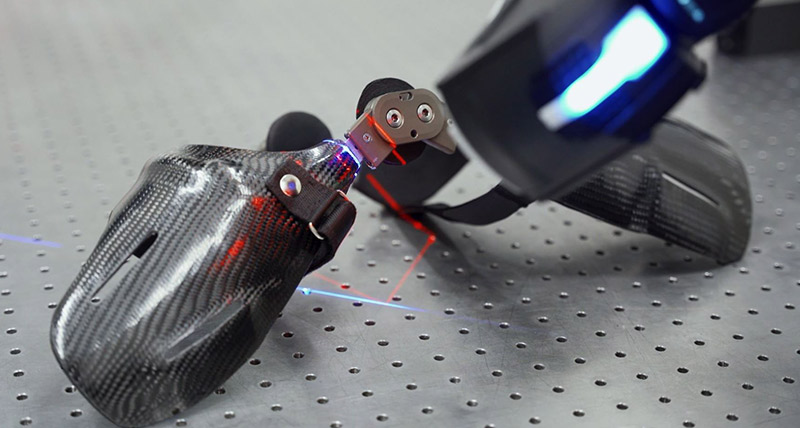
Nonnengässer’s target group are patients with osteoarthritic knee joints, more commonly known as typical bow legs or knock-knees. “This is a problem that causes problems like pain and restricted mobility in old age, and operating is often the only solution. The aim of these joints or orthoses is to bring a gentle correction to it and to achieve pain relief for the patient.”
“G&G have been working with Hexagon for many years and we are very satisfied,” says Gabriel. “As a high quality standard is our guideline, we ensure the quality standard of our products according to DIN EN ISO 9001 certified processes thanks to our extensive measuring and testing systems. One important principle in this is error prevention and zero-defect is our target. In order to guarantee the constantly growing quality requirements, we rely on the most modern technology in the area of measuring, which is why we use an Absolute Arm from Hexagon with a measuring range of 2000 millimetres and a measuring accuracy of less than 5 microns. The system offers us portability and therefore allows for workpieces to be checked directly on the machine.”

For the new joints project, G&G used the Absolute Arm with Hexagon’s flagship modular 3D laser scanner, the Absolute Scanner AS1, to digitise the components, the actual part and the nominal part. From this they could calculate a retrofit and then do a best fit alignment to quickly check everything fits before beginning the milling process.
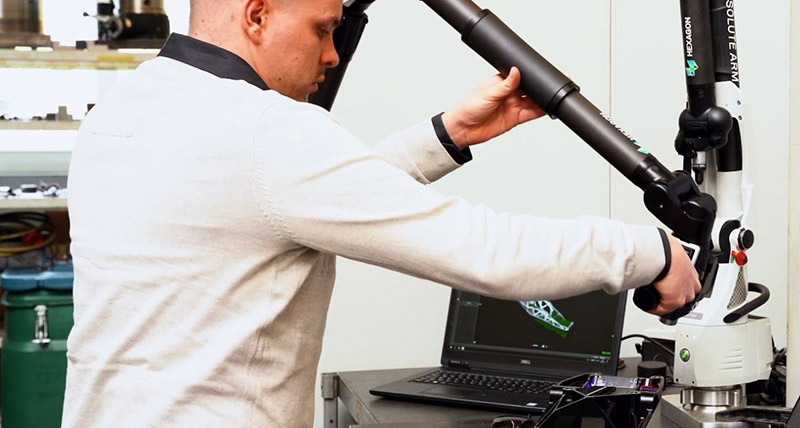
The new joints G&G are able to produce with this process provide a much gentler correction, like braces. “With those upgraded orthoses, the knee joint is now simply gently pressed into its position, as it should be; the pressure points have been completely changed by this longitudinal shift,” explains Nonnengässer. “The result is a better correction and, much more importantly, a better acceptance from patients, especially because we can readjust the orthosis at any time analogous to the course of therapy and not fix the leg in a way that is unchangeable.”


